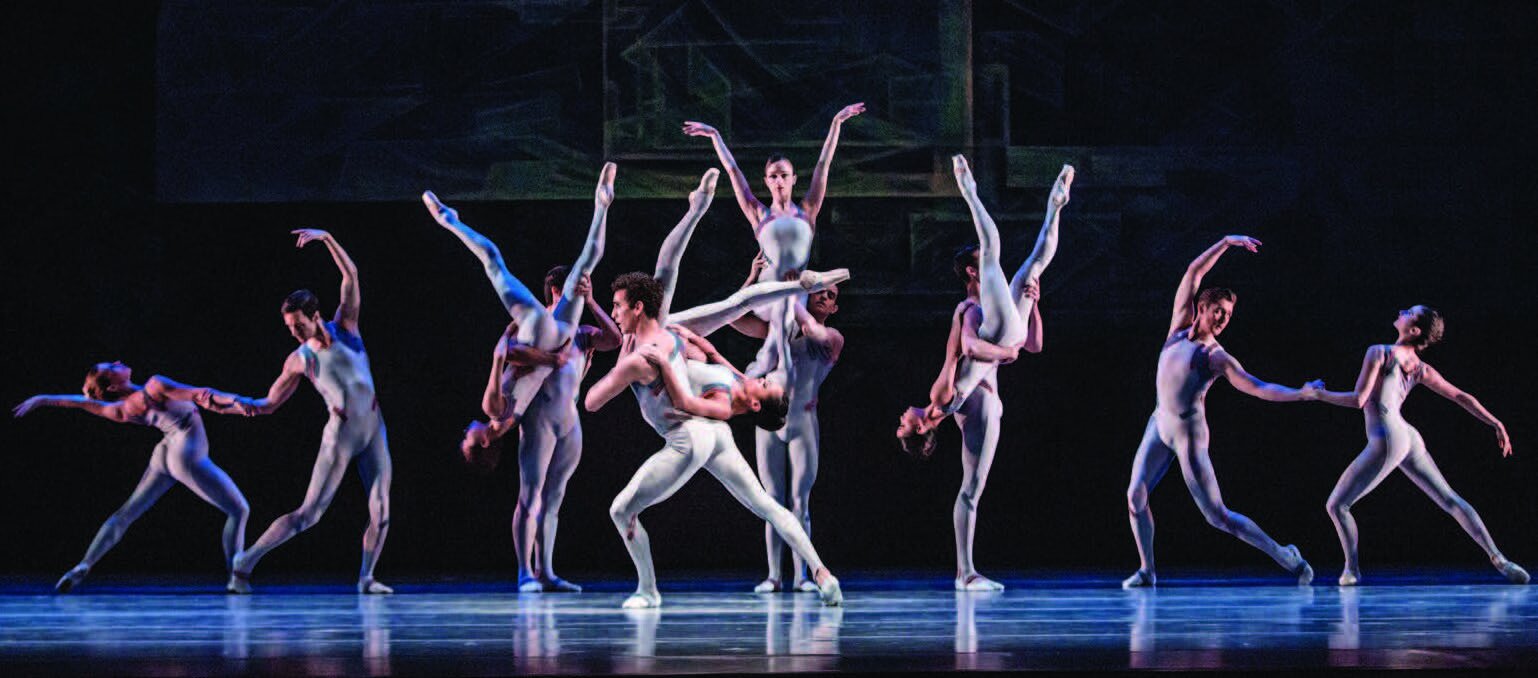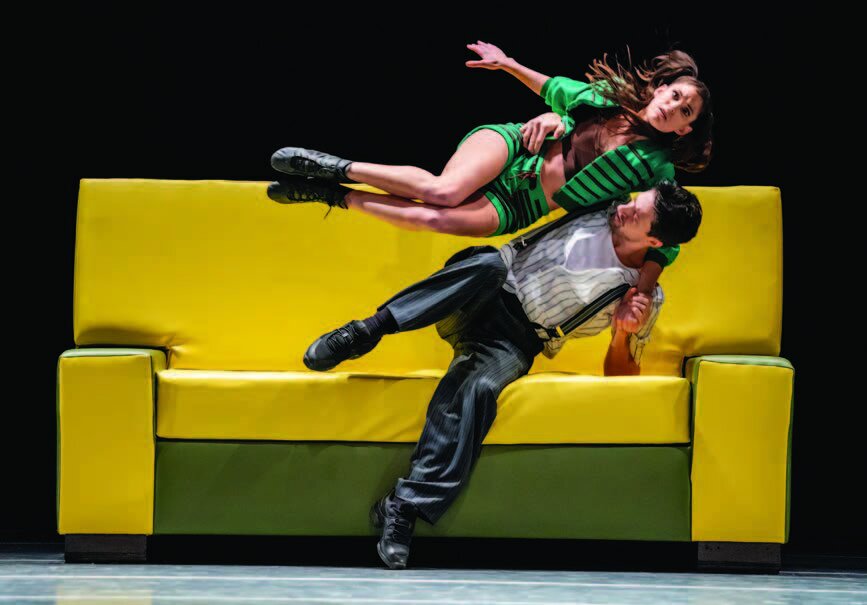By Kyle MacMillan
George Balanchine. Merce Cunningham. Laura Dean. Martha Graham. Bill T. Jones. Pearl Lang. Mark Morris. Paul Taylor. Twyla Tharp.
While Ravinia has always centered primarily on music of all kinds, all these celebrated dance creators and more have brought their works and companies to the festival over the decades. Indeed, it has amassed the kind of storied performance history in the form that even some dedicated dance festivals might envy.
“To me, dance with live music is really important,” says Jeffrey Haydon, who took over last September as Ravinia’s president and chief executive officer. “We are in a very visual society right now, and I think that is a way that people can connect even more with music: by seeing it visualized through dance.”
Ravinia’s dance tradition will continue September 17, when the Chicago-based Joffrey Ballet returns to the festival for the first time since 2008. While the company did participate in Dance for Life, a 40-troupe showcase at Millennium Park on August 26, Joffrey’s appearance at Ravinia will be its first live, in-person performance on its own since the Coronavirus shutdown in March 2020.
“I have always loved Ravinia,” says Ashley Wheater, Joffrey’s Mary B. Galvin Artistic Director. “There was a time when the company was there more often, and I’ve always wanted to take the company back to Ravinia. We have a huge amount of support up on the North Shore, and it’s a beautiful venue.”
Dance has played a prominent role at Ravinia at least as far back as 1926–28 when the internationally renowned Chicago dance pioneer Ruth Page served as ballet director for several opera productions. “That is one of the things that she did for Chicago as a whole—adding more to opera than just music,” says Silvino da Silva, acting executive director of the Ruth Page Center for the Arts, which celebrates its 50th anniversary this year. In addition to her work at Ravinia, Page oversaw ballet for the Lyric Opera of Chicago from 1954 through 1969 and led the internationally touring Chicago Opera Ballet, an outgrowth of her work at Lyric, starting in 1955.
Page had another impact on Ravinia six years before her death in 1991, when she endowed an annual series of dance at the event—what has come to be called the Ruth Page Festival of Dance. Joffrey is appearing in part under its financial auspices. “That’s part of her lasting legacy with Ravinia,” da Silva says. In recent years, through the efforts of Haydon’s predecessor, Welz Kauffman, Page-supported events have taken place not only on the festival grounds in the summers but also at the Auditorium Theatre and elsewhere at other times of the year in collaboration with Ravinia.
Going back to at least 1947, ballet companies—full troupes and ensembles of star dancers—and modern dance ensembles have visited the Ravinia Festival regularly. Among the many highlights was the 1967 appearance of the Merce Cunningham Dance Company just three years after it made its first international tour. The July 25 performance that year featured the world premiere of Scramble, with a set and costumes by famed artist Frank Stella. (The company returned in 1978.)
Diversity has long figured into Ravinia’s dance offerings, with the festival presenting a rich range of female-led companies, including those of Pearl Lang, a Chicago native known for introducing Jewish themes into many of her pieces, and Carmen de Lavallade, a daughter of Creole parents whose multifaceted career included appearances as a principal guest performer with the Alvin Ailey American Dance Theater. Ravinia also commissioned the famed African American choreographer Bill T. Jones to create a dance-theater work celebrating the bicentennial of Abraham Lincoln’s birthday. The Bill T. Jones/Arnie Zane Dance Company premiered the ambitious creation, Fondly Do We Hope ... Fervently Do We Pray, in 2009 and subsequently toured it extensively.
The New York City Ballet’s visits are notable both for their longevity—1959 through 1972—and for their dazzling lineups of featured stars, including Jacques d’Amboise, Suzanne Farrell, Melissa Hayden, Allegra Kent, Patricia McBride, Arthur Mitchell, Maria Tallchief, and Edward Villella.
In addition, it was those visits that apparently led George Balanchine, the company’s legendary artistic director, to consult on the “sprung-floor” stage for the festival’s present-day Pavilion, which was designed by the Chicago firm of Holabird & Root and opened in 1970. Unfortunately, little is recorded of his exact contributions. “What’s great about the Pavilion is that the sight lines are really good,” Wheater says, “and it has a really good capacity. In terms of an open-air stage, it’s big enough, wide enough, and deep enough to do a pretty substantial amount of [dance] rep.”
Joffrey’s first appearance was in 1972, long before it was based in Chicago, and it became something of regular, appearing each year through 1979. But performances in recent years have been more sporadic—just five times since 2000. In addition to helping fulfill Haydon’s wish to put a renewed accent on dance, the company’s appearance this year is part of the Ravinia leader’s desire to more frequently collaborate with other prominent Chicago-area cultural institutions. “Yes, we’re bringing in the best from all over the world,” he says, “but we also have the best in the world here in Chicago. How can we make that part of Ravinia’s program as well?”
Chanel DaSilva’s Swing Low receives its live stage premiere by The Joffrey Ballet at Ravinia on September 17.
Haydon saw this collaboration and others like it as especially important in the aftermath of the monthslong COVID-19 closure that wiped out live performances and financially damaged many arts groups. Ravinia has been one of the first area organizations to reopen, and it wanted to extend a helping hand to some of its Chicago-area counterparts. “We just wanted to also be a good neighbor,” the Ravinia leader says, “and help the rest of the cultural community come back to life. Our hope was this could be their first big public experience. Their audience could reconnect, and, hopefully, that sets them onto a successful fall season.”
“Chanel DaSilva is an amazingly talented woman, a really fresh voice in the dance world.”
And that is certainly Haydon how hopes it works out for the Joffrey, which begins its 2021–22 subscription schedule October 13–24 in its new performance home, the Lyric Opera House. It took little convincing to get the ballet company to return to Ravinia. In addition to the general appeal of the festival, Wheater says, the timing couldn’t be better. Normally, there is a big gap from May to October when the company is largely out of view—one that the Ravinia date nicely helps plug. “We have an audience that wants to see us more than the three or four times a year in the theater,” he says.
Joffrey is planning to bring 32 of its veteran dancers to Ravinia—about three-quarters of its full company, which recently added four new members. It will perform three works it has performed live previously and one that it presented via digital streaming in May as part of its Joffrey Studio Series, Chanel DaSilva’s Swing Low. Such familiarity is important, Wheater says, as the dancers work their way back into full performing form. Though they did virtual projects during the shutdown, he emphasized that nothing has the same intensity as a live performance.
“So, coming to Ravinia with a program that the company knows,” Wheater says, “is a really good way to come back to live performances where it’s not so foreign to them that they’re going to push too hard and get injured. My worry about any athlete who has time off is injury.”
In addition to familiarity for the dancers, Wheater sought four varied works that he thought would fit well into the fun, informal feel of Ravinia’s outdoor setting and show audiences who don’t know the company that it is much more than just tutus and fairy tales. Among the three works it has staged earlier are Nicholas Blanc’s Beyond the Shore and Itzik Galili’s The Sofa. The program will end with The Times Are Racing by Justin Peck, the New York City Ballet’s innovative resident choreographer. The 2017 work features 20 dancers in sneakers and street clothes performing a high-voltage mix of ballet, modern dance, and soft shoe.
Haydon’s one condition for the Joffrey’s return to Ravinia was that it presented at least one piece to live music, and Wheater readily agreed. DaSilva’s Swing Low was originally set to a score for digitally enhanced cello that was written and played by Zoë Keating. The instrumentation has been expanded to eight string instruments for this program, a version that will be performed by members of the Chicago Philharmonic.
DaSilva was one of four choreographers to take part in the 2021 edition of Joffrey’s Winning Works choreographic competition, which showcases the talents of emerging ALAANA (African, Latinx, Asian, Arab, and Native American) choreographers. This work, created for five male dancers, investigates the supernatural realm of angels and the earthly existence of humanity. “She’s an amazingly talented woman,” Wheater says, “and I think she’s a really fresh voice in the dance world.”
Nothing has been confirmed, but don’t be surprised to see the Joffrey returning soon to Ravinia. Both Haydon and Wheater have made their enthusiasm for the partnership clear, and interest has been high for the September 17 performance. “I would say: Every year? Great,” Wheater says, musing on a possible reengagement. “Every other year? Absolutely, that works really well for us.” ■
Kyle MacMillan served as classical music critic for the Denver Post from 2000 through 2011. He currently freelances in Chicago, writing for such publications and websites as the Chicago Sun-Times, Early Music America, Opera News, and Classical Voice of North America.





